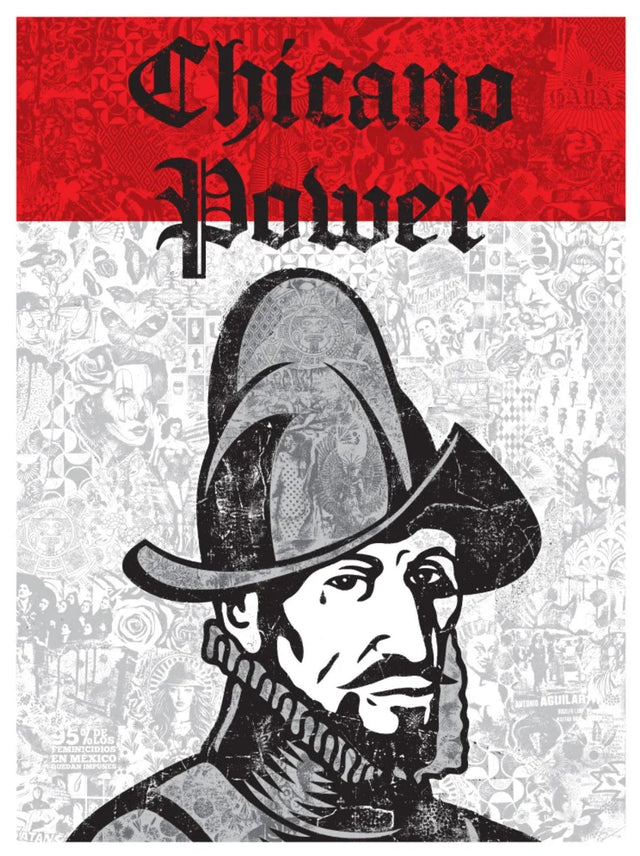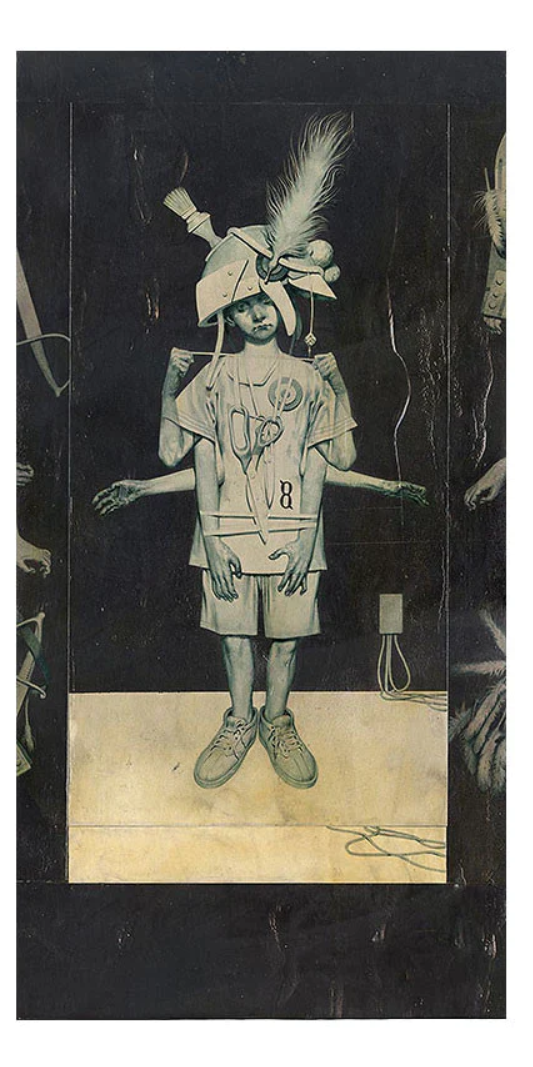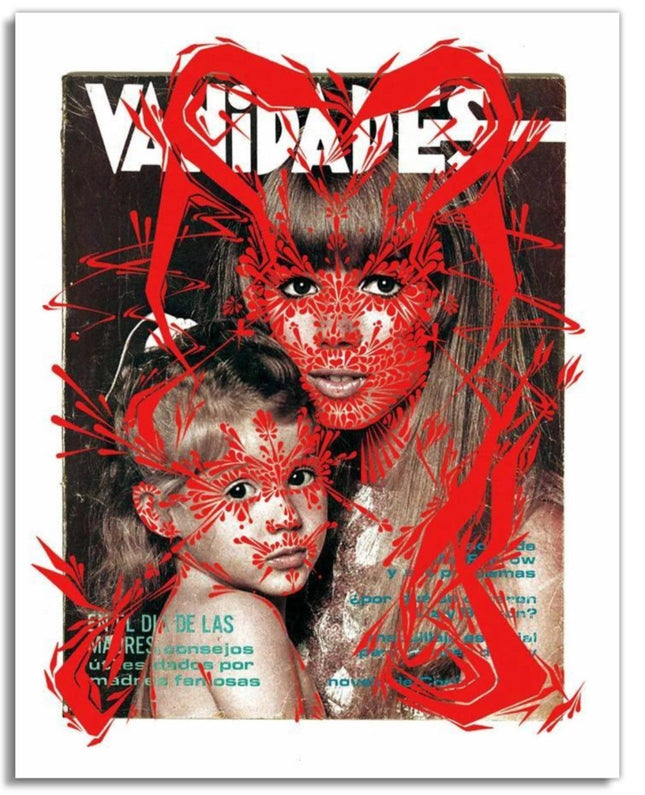
Latin

João Ruas- Feral Kid Absurd Courage AP Giclee Print by João Ruas- Feral Kid
Absurd Courage AP Artist Proof Giclee Print by João Ruas- Feral Kid Artwork Limited Edition Print on Museo Portfolio Rag Paper Graffiti Pop Street Artist. AP Artist Proof 2014 Signed & Marked AP Limited Edition Artwork Size 13x22.5 The Evocative Narrative of João Ruas' "Absurd Courage" "Absurd Courage" by João Ruas is a profound Artist Proof (AP) Giclee print that encapsulates the essence of his work within the street pop and graffiti art movements. Known for his stirring illustrations that blend fantastical elements with the real, Ruas' "Absurd Courage" is a testament to his skill in communicating complex themes through his art. Released as a limited edition print in 2014, it resonates deeply with contemporary street art enthusiasts. Technical Mastery in "Absurd Courage" Printed on Museo Portfolio Rag Paper, a premium choice for fine art reproductions, "Absurd Courage" exhibits Ruas' work's rich texture and nuanced shades. The paper's archival quality ensures the longevity of the print, preserving the intricate details and the vibrancy of the colors. The artwork's dimensions, 13x22.5 inches, offer a generous space for Ruas to explore and express the grandeur of his subject—the 'Feral Kid.' Each print is meticulously signed and marked as an Artist Proof by Ruas, adding a layer of exclusivity and authenticity highly valued in the art community. Symbolism and Style in Ruas' Street Pop Art In "Absurd Courage," Ruas employs his distinctive style to navigate the realms of surrealism and reality, a hallmark of his approach to street pop art. The 'Feral Kid' depicted is not just a figure but a symbol of innate resilience and the untamed spirit. It explores the primal instincts that lie within the human psyche, presented through the lens of modern graffiti artwork. The piece evokes a feeling of nostalgia while simultaneously propelling the viewer into a contemplative state, pondering the absurdity and the courage that define the human experience. João Ruas' Impact on Modern Graffiti and Pop Art João Ruas' impact on the modern art scene, particularly within street pop and graffiti art, is indelible. "Absurd Courage" is a piece that perfectly illustrates the intersection of traditional artistic discipline with the urban grit of street art. Ruas' ability to create a visual language that is both universal and deeply personal has garnered him acclaim in the contemporary art world. The 'Feral Kid' serves as a motif that challenges the viewer to question and understand the layers of meaning within themselves and the artwork. In essence, João Ruas' "Absurd Courage" is more than a piece of art; it is a narrative woven into the fabric of street pop and graffiti art culture. Its presence in the art world continues to challenge, inspire, and influence both creators and admirers of this vibrant and ever-evolving art form.
$450.00

Stinkfish Wild Vanity Red Silkscreen Print by Stinkfish
Wild Vanity- Red Hand-Pulled Limited Edition 5-Color Silkscreen Print on Cougar Natural Paper by Stinkfish Rare Street Art Famous Pop Artwork Artist. 2014 Signed & Numbered Wild Vanity by Stinkfish Screen Print Edition of 65 | Signed by the Artist Size: 18" x 22.5" City: Bogata, Colombia. Five color screenprint on Cougar Natural printed at FugScreens Studios, 18″ x 24″. Stinkfish's "Wild Vanity": A Vibrant Fusion in Street Pop Art "Wild Vanity" emerges as an exceptional creation from Stinkfish, an artist renowned for his vivid street pop art and graffiti artwork. This piece represents a striking amalgamation of the artist's signature stencil style with the vibrant color palette that often characterizes his work. Hand-pulled and limited to a series of 65, "Wild Vanity" is a five-color silkscreen print on Cougar Natural paper that showcases Stinkfish's exploration into the vibrancy of human features juxtaposed with the abstract patterns that define his artistic expression. Crafted in 2014 and sized at 18" x 22.5", "Wild Vanity" was brought to life at FugScreens Studios, known for its exceptional screenprinting work. The artist's choice of Cougar Natural paper—a high-quality, uncoated stock—serves as the perfect canvas for the print, ensuring that the colors remain vivid and the details sharp. Each hand-pulled print is signed and numbered by Stinkfish, offering a tangible connection to the artist's hand and vision. The Artistic Language of Stinkfish in "Wild Vanity" The artistic language Stinkfish employs in "Wild Vanity" is bold and subtle. The reds are not merely hues but are symbolic expressions of energy and passion. The silkscreen method allows for a layering effect that gives each color its own space to breathe while contributing to the overall unity of the piece. This technique indicates Stinkfish's roots in graffiti, a world where color, form, and space beautify com, communicate, and resonate with the onlooker. Stinkfish's work is often characterized by found photographs and images from the streets, which he recontextualizes by adding his distinctive stenciled patterns. "Wild Vanity" is no exception. The faces in the artwork appear to be lifted from an existing narrative, a snippet of a larger story that the viewer is invited to ponder. The overlay of intricate patterns across the faces transforms the subjects, commenting on the masks we wear and the identities we portray. Cultural Implications of "Wild Vanity" in Contemporary Art "Wild Vanity" stands at the crossroads of multiple cultural narratives. It is not just a visual feast but an artistic statement that delves into the essence of identity and perception in the modern world. Through the five-color silkscreen print, Stinkfish challenges the traditional boundaries between high art and street art, merging them into a singular expression that is both accessible and complex. The work's title, "Wild Vanity," hints at a critique of self-obsession and the constructed images prevalent in society. Using a fashion magazine cover as the foundation for this piece, Stinkfish engages in a dialogue with the viewer about the nature of beauty and the role of media in shaping our understanding of it. The wildness comes from the disruptive patterns that cascade over the faces, suggesting a tension between the natural human essence and the artificial veneer of societal standards. Collectibility and Influence of Stinkfish's Silkscreen Prints As a collectible, "Wild Vanity" represents an essential piece of Stinkfish's portfolio, encapsulating his distinct style and thematic concerns. The limited edition nature of the print makes it a coveted item for collectors and enthusiasts of street pop art. Stinkfish's influence extends beyond the street corners of Bogota, Colombia—his work is recognized globally, and pieces like "Wild Vanity" are pivotal in understanding the trajectory of his artistic journey. The print is also a testament to the evolution of street art into a recognized and celebrated form of fine art. By bringing the techniques and aesthetics of street art into the controlled environment of the studio and then onto fine art paper, Stinkfish bridges worlds, offering a piece that is as much at home in a gallery as on the streets. In the context of pop, street art, and graffiti artwork, "Wild Vanity" is a vibrant example of how these genres can intersect to create works that reflect contemporary culture and are timeless in their appeal. Stinkfish's ability to communicate through layers of color and pattern ensures that "Wild Vanity" will remain a significant and thought-provoking piece within the ever-evolving narrative of art.
$209.00



